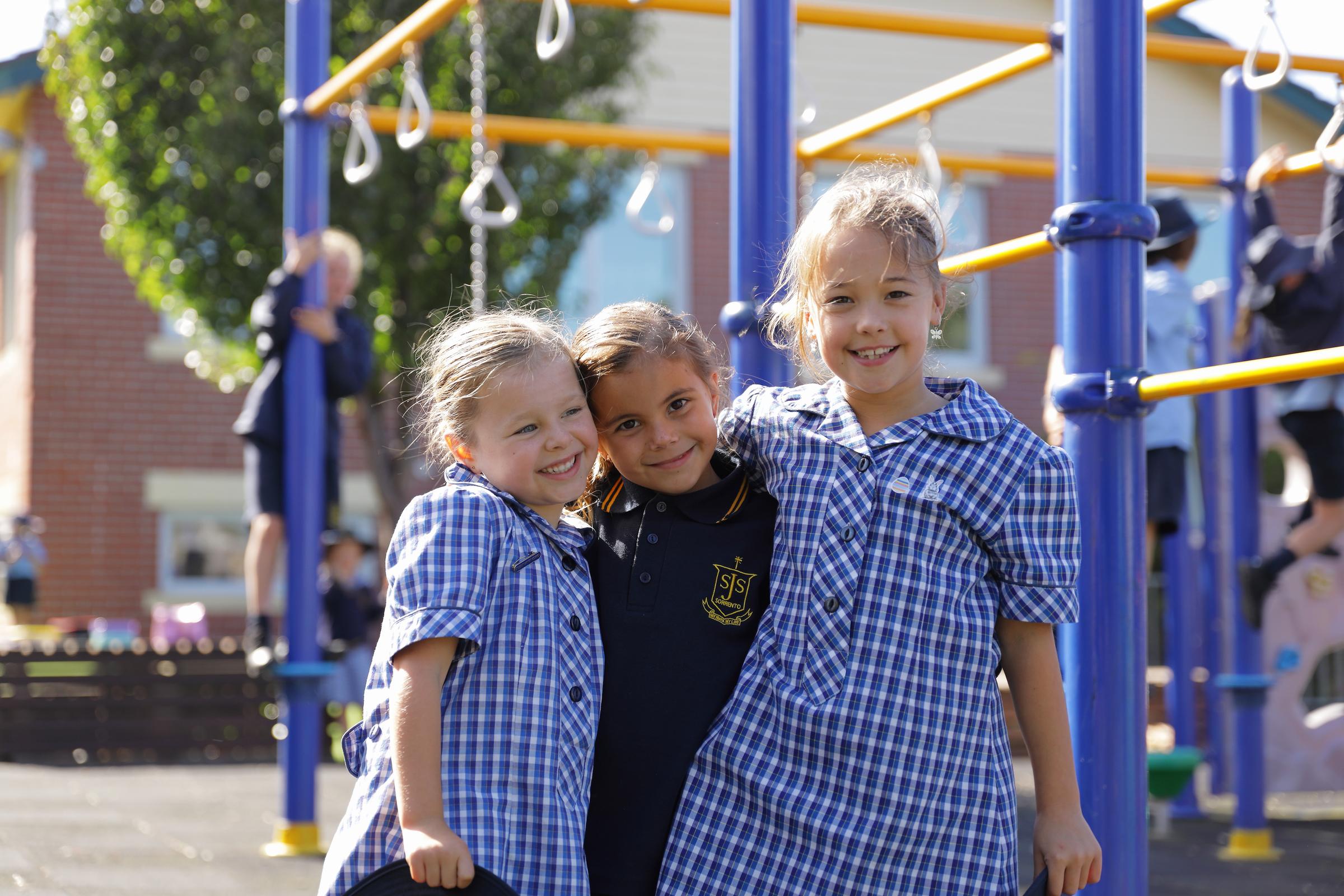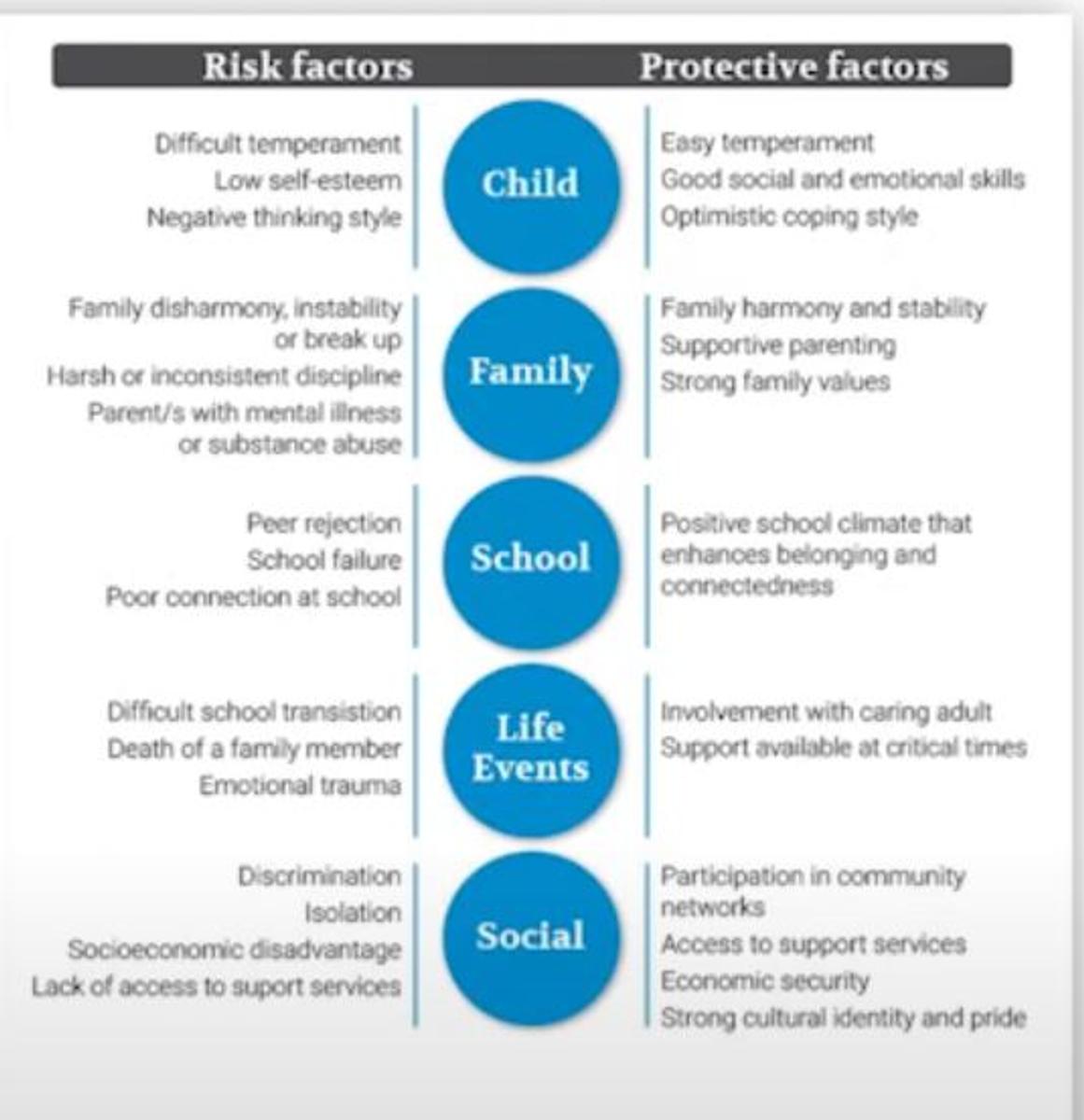Student Wellbeing

PROTECTIVE FACTORS AND RISK FACTORS Influencing the Wellbeing of our School Community
Recently, our staff took part in some highly worthwhile professional learning presented by BE YOU (Beyond Blue) on the topics of:
Session 1 - Responding to Student Mental Health Concerns
Session 2 - Embedding SEL (social and emotional learning) across our school
Throughout each session, the topic of risk factors and protective factors was delved into. As outlined in the diagram below, Be You explained that throughout anybody's life course there are a range of influences and events, both positive and negative, that impact an individual's mental health, known as risk and protective factors.
RISK FACTORS, for young people's mental health and wellbeing, can increase the likelihood of mental health issues developing during childhood and also beyond.
PROTECTIVE FACTORS, on the other hand, decrease the likelihood of mental health issues and build and maintain resilience, even when those risk factors are present.
Enhancing individual family and environmental protective factors means that young people are less likely to be vulnerable, because they are receiving the acceptance and support that is required for learning and social emotional development and for building resilience.
REMEMBER THOUGH......that these lists aren't prescriptive and they don't determine the outcomes for any particular child or young person. Everyone is different and it's often a combination of factors that can contribute to a mental health issue. So while risk factors might often indicate circumstances that severely challenge a young person's mental health and wellbeing, predicting whether an individual might develop a mental health issue isn't straightforward. For example, sometimes risk factors can result from an isolated event, but more often, however, several risk factors might combine with one another and it's their combined effect that can lead to issues. For example, for a young person, a difficult transition to school, coupled with poor connections at school and a sense of social isolation could mean a child or young person is more vulnerable to developing a mental health issue.
BUT WHAT'S REALLY EXCITING TO KNOW IS......that the evidence shows that school communities and effective partnerships with parents and carers can really maximise those protective factors and, at times, address risk factors for the children and young people within our community.
What risk factors are relevant for each school community?
These can be so unique to each school's context so it's important to identify what these are in partnership with other key people in the school. The views of the support team around the child are really important, but so are those of other staff, families and other key members in the community. Working together to identify these risk and protective factors as a community for the community, really support buy-in and commitment from others as plans are made and enacted across the school.
At St Joseph's, we welcome this coollaborative process with the families, teachers, support staff and school community members to enable the full flourishing and the optimal wellbeing for each student at our school. We strive to provide as many protective factors and strategies as possible for the students' time while at school, including:
- explicit teaching of SEL (Social and Emotional Learning) including teaching optimism and resilience
- providing a positive school climate where students, parents, teachers and community members feel connected and valued.
Here is a short 3 minute video from BE YOU that elaborates upon the Protective and Risk Factors and how these can influence a child's wellbeing.
Warm Regards,
Jenny Todd
(Student Wellbeing Leader)


